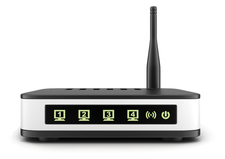Exploring the SafeSquid filter proxy
Safety Filter

If you are looking for a secure option for home surfing and want to protect your children against questionable web content, you need a filtering proxy. SafeSquid is a commercial proxy tool, but it comes with a free version for private users.
SafeSquid acts as a proxy for home users and small to medium-sized networks. The software sits between the browser and the Internet and provides a number of content filters (including for Flash) to make surfing more secure by defining domain blacklists and scanning for malware. Additionally, SafeSquid provides access control in the form of website categories and profiles, as well as an image recognition feature for blocking pornographic material.
Thanks to a cache for web pages and images, in combination with intelligent prefetching for web pages, the SafeSquid also accelerates the surfing experience. A convenient web interface lets users evaluate logs and generate reports. Although the name might make you think otherwise, SafeSquid does not actually use the open source Squid proxy under the hood; instead, it uses a C/C++ in-house alternative developed by the vendor Office Efficiencies. SafeSquid also relies on Bash and Perl scripts for various application cases.
The vendor provides a free version and several commercial alternatives. The free Composite edition is likely more interesting for home users. One difference between the free and commercial variants is that the free version is limited to a maximum of three users. If more than three users access the network filter suite that is centrally installed on your home network, you need the commercial version [1].
[...]
Buy this article as PDF
(incl. VAT)
Buy Linux Magazine
Subscribe to our Linux Newsletters
Find Linux and Open Source Jobs
Subscribe to our ADMIN Newsletters
Support Our Work
Linux Magazine content is made possible with support from readers like you. Please consider contributing when you’ve found an article to be beneficial.

News
-
Zorin OS 18 Hits over a Million Downloads
If you doubt Linux isn't gaining popularity, you only have to look at Zorin OS's download numbers.
-
TUXEDO Computers Scraps Snapdragon X1E-Based Laptop
Due to issues with a Snapdragon CPU, TUXEDO Computers has cancelled its plans to release a laptop based on this elite hardware.
-
Debian Unleashes Debian Libre Live
Debian Libre Live keeps your machine free of proprietary software.
-
Valve Announces Pending Release of Steam Machine
Shout it to the heavens: Steam Machine, powered by Linux, is set to arrive in 2026.
-
Happy Birthday, ADMIN Magazine!
ADMIN is celebrating its 15th anniversary with issue #90.
-
Another Linux Malware Discovered
Russian hackers use Hyper-V to hide malware within Linux virtual machines.
-
TUXEDO Computers Announces a New InfinityBook
TUXEDO Computers is at it again with a new InfinityBook that will meet your professional and gaming needs.
-
SUSE Dives into the Agentic AI Pool
SUSE becomes the first open source company to adopt agentic AI with SUSE Enterprise Linux 16.
-
Linux Now Runs Most Windows Games
The latest data shows that nearly 90 percent of Windows games can be played on Linux.
-
Fedora 43 Has Finally Landed
The Fedora Linux developers have announced their latest release, Fedora 43.

